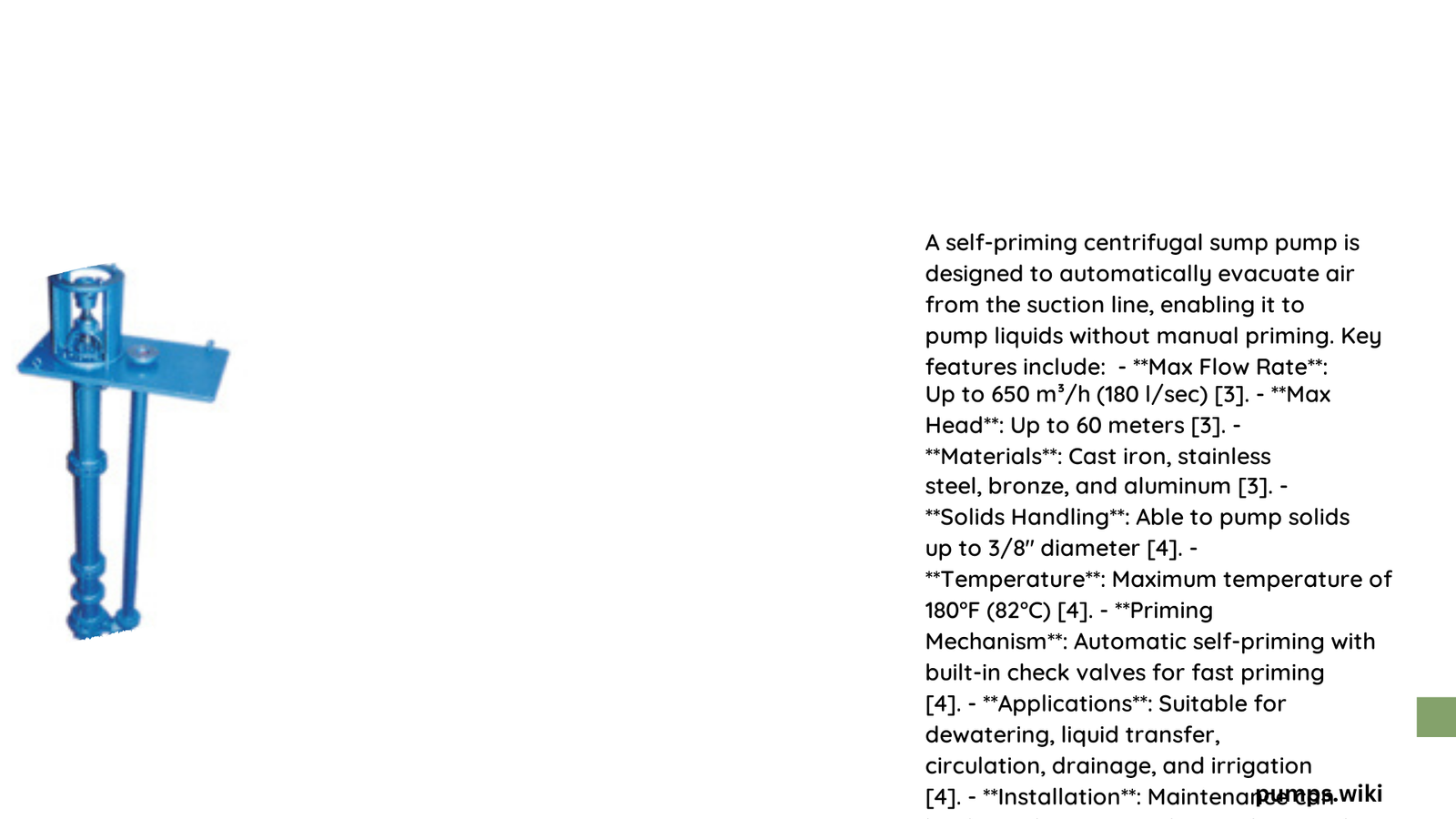Self priming centrifugal sump pumps are essential for efficient water removal in various applications. These pumps combine the benefits of centrifugal pumps with self-priming capabilities, making them ideal for sump pit drainage, flood control, and wastewater management. With flow rates ranging from 150 to 1540 GPM and head pressures up to 262 feet, these pumps offer versatile solutions for both residential and industrial needs.
What are the Key Features of Self Priming Centrifugal Sump Pumps?
Self priming centrifugal sump pumps are characterized by their ability to create suction and lift water without manual priming. Key features include:
- Self-priming mechanism
- High flow rates
- Robust construction materials
- Versatile applications
- Energy-efficient operation
How Do Self Priming Centrifugal Sump Pumps Work?

Self priming centrifugal sump pumps operate on the following principles:
- Initial priming: The pump casing is filled with water before operation.
- Air removal: As the impeller rotates, it creates a vacuum that removes air from the suction line.
- Water lift: Once the air is removed, water is drawn up into the pump.
- Continuous operation: The pump maintains a constant flow of water as long as it’s running.
What are the Specifications of Popular Self Priming Centrifugal Sump Pumps?
Here’s a comparison of three popular self priming centrifugal sump pump models:
| Model | Flow Rate | Head Pressure | Motor Power | Material Construction |
|---|---|---|---|---|
| FreFlow | Up to 1540 GPM | Up to 262 feet | 1-3 HP (typical) | Cast iron, Bronze, Stainless steel |
| AMT 2″ | Up to 150 GPM | Up to 102 feet | 1-1/2 to 3 HP | Cast Iron, Stainless Steel |
| North Ridge XR416 | Up to 180 m³/h | Up to 27 meters | Varies | AISI316, AISI316L, Bronze, Cast Iron, Ductile Iron |
How to Install a Self Priming Centrifugal Sump Pump?
Follow these steps to install your self priming centrifugal sump pump:
- Choose a suitable location
- Connect inlet and outlet pipes
- Mount the pump securely
- Make electrical connections
- Prime the pump
- Test the installation
Ensure you have the necessary tools and materials, including a pipe wrench, Teflon tape, pipe fittings, and mounting hardware.
What are the Benefits of Self Priming Centrifugal Sump Pumps?
Self priming centrifugal sump pumps offer several advantages:
- Efficiency: Models like the North Ridge XR416 can achieve up to 74% efficiency.
- Energy savings: Optimized designs reduce power consumption.
- Longevity: With proper maintenance, these pumps can last 10-20 years or more.
- Cost-effectiveness: Reduced energy use and minimal downtime lead to significant savings.
How to Maintain a Self Priming Centrifugal Sump Pump?
Proper maintenance is crucial for the longevity and efficiency of your pump:
- Conduct regular inspections every 3-6 months
- Clean the pump internals and suction line
- Replace filters and seals as needed
- Address common issues like clogs and noise promptly
What are Common Troubleshooting Tips for Self Priming Centrifugal Sump Pumps?
When facing issues with your pump, consider these troubleshooting tips:
- Check for clogs in the impeller and suction line
- Ensure proper alignment and mounting to reduce noise
- Inspect and replace worn-out bearings
- Verify electrical connections and power supply
By following these guidelines, you can maintain optimal performance of your self priming centrifugal sump pump and extend its lifespan.
